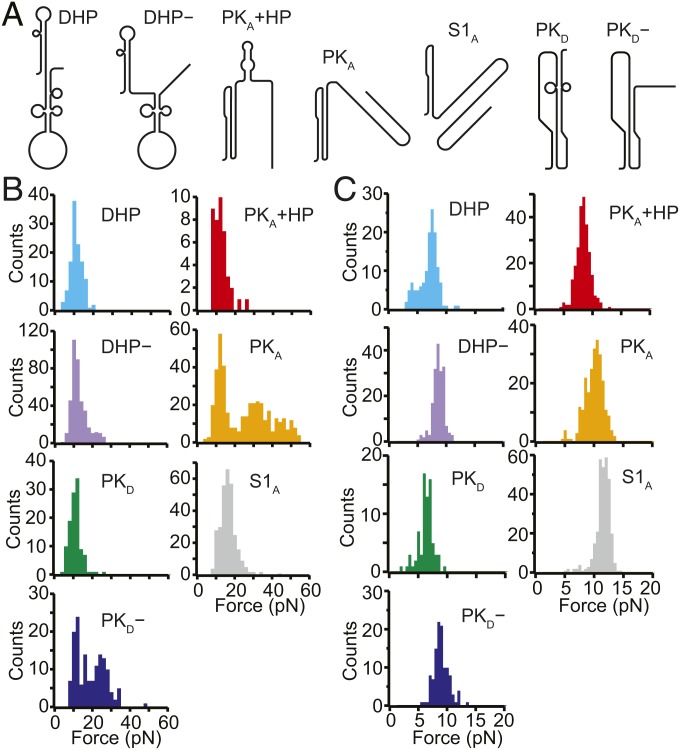Fig. 2.
Different structures formed by the WNV frameshift signal in FECs. (A) Secondary structure models for the different conformations matching the states observed in the FECs (see also SI Appendix, Fig. S1). (B) Unfolding force distributions for the different states. The unfolding forces for DHP, DHP−, S1A, PKD, and PKA+HP were in the range of ∼5 to 20 pN, characteristic of secondary structures. (For PKD, and PKA+HP, a duplex/hairpin unfolded rather than the more stable pseudoknot.) Most unfolding forces for PKA and PKD− were in the range of 20 to 60 pN, characteristic of fully formed pseudoknots, although some transitions occurred at lower force, suggesting incomplete tertiary contact formation. (C) Refolding force distributions for each state. Refolding forces were only slightly smaller than unfolding forces for DHP, DHP−, S1A, PKD, and PKA+HP but were considerably smaller for PKA and PKD−.

